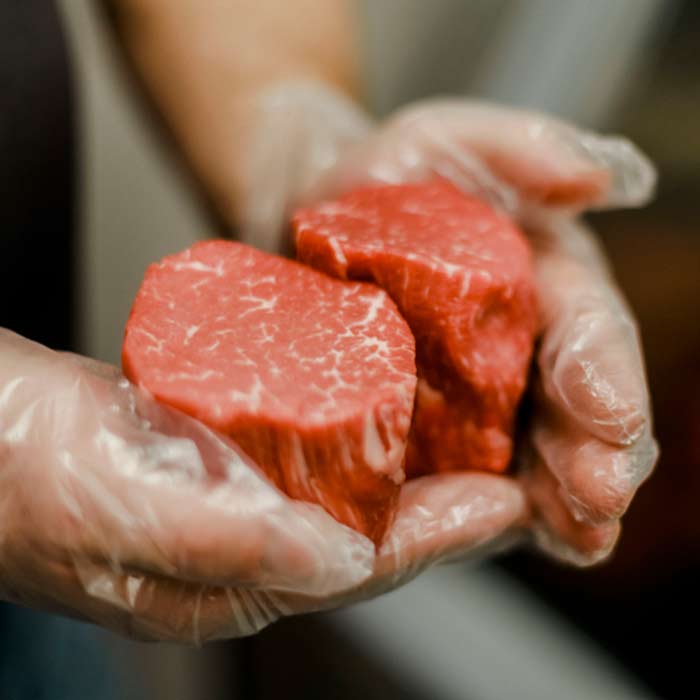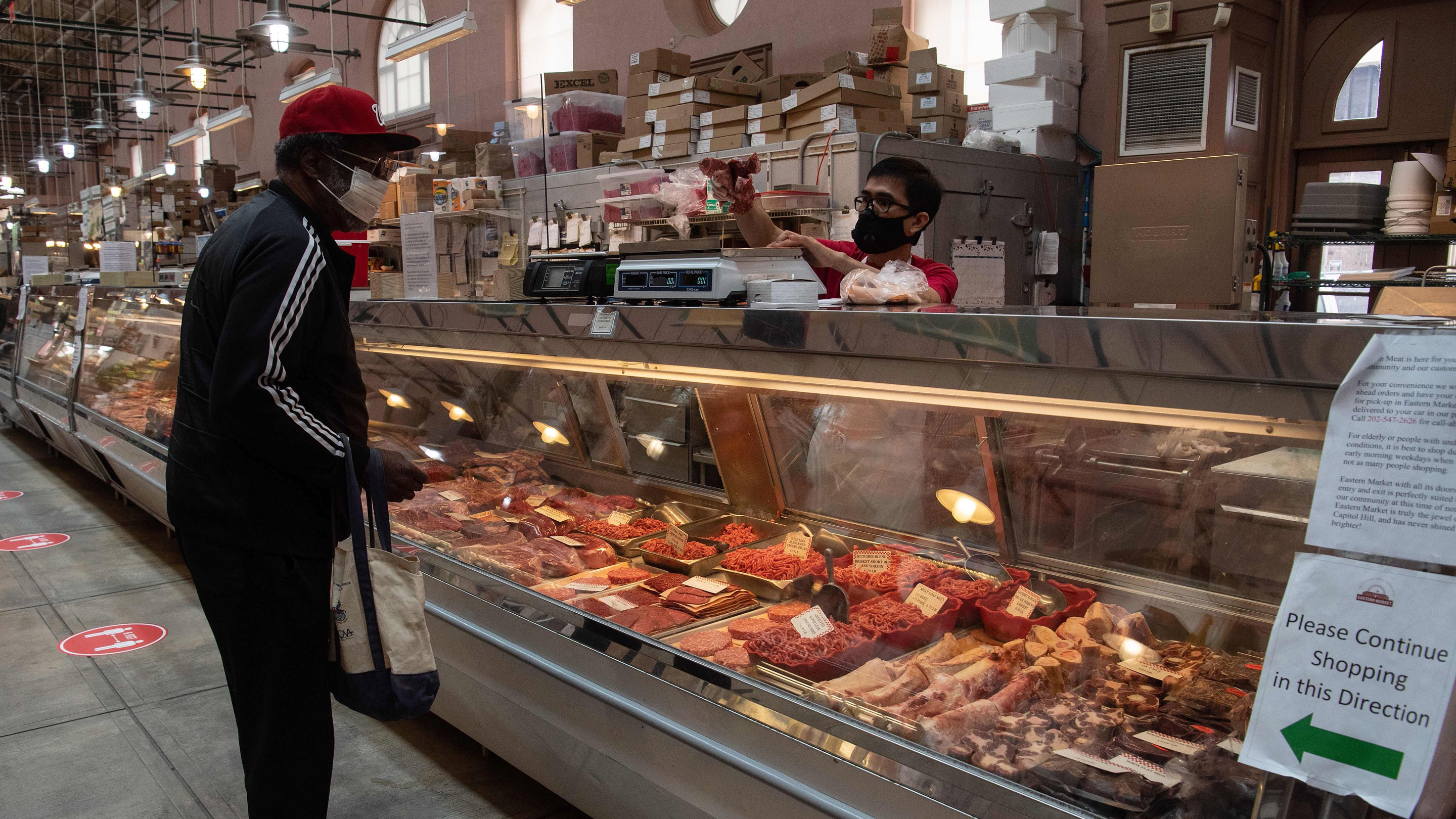Why Locals Love Bagley Farms Meat Market Edwardsville IL for Their Meat Shopping
Why Locals Love Bagley Farms Meat Market Edwardsville IL for Their Meat Shopping
Blog Article
Reveal the Art of the Butcher's Cut in a Modern Meat Market
In the ever-evolving landscape of modern meat markets, the butcher's cut has actually transcended its conventional origins, merging old-time craftsmanship with modern practices. What genuinely sets the modern-day butcher apart is their ability to create a deeper connection in between consumers and the origins of their meat.
Advancement of Butchery Methods

The mid-20th century saw butchery strategies better improved by clinical understandings right into muscle biology and meat aging, enhancing both inflammation and preference. Advancements like vacuum product packaging and refrigeration expanded product shelf-life, allowing butchers to expand offerings and enhance quality assurance. This period additionally marked the surge of specific equipment, such as band saws and meat slicers, which increased accuracy and efficiency in meat handling.
The 21st century has actually introduced electronic innovation right into the butchery world. Digital systems currently help in tracking pet provenance and enhancing cuts to meet details client preferences. Furthermore, a renewal in artisanal butchery has arised, mixing standard skills with contemporary knowledge to satisfy consumers seeking moral and sustainable meat alternatives. This development emphasizes a dynamic interaction between practice and technology, conference contemporary demands while preserving the craft's heritage.

Understanding Meat Cuts

Recognizing the details of meat cuts is necessary for both butchers and customers seeking quality and worth. Each cut originates from a different part of the pet, giving special flavors, appearances, and food preparation techniques. Mastery of these differences not just improves culinary experiences but also takes full advantage of the utility of each carcass. For butchers, accurate cuts show skill and regard for the craft, making certain very little waste and optimal yield.
The main categories of meat cuts consist of primitive, sub-primal, and retail cuts. Primitive cuts, such as the loin, rib, and chuck, are the large sections initially divided from the carcass. Butchers then damage these down even more right into sub-primal cuts, before ultimately producing retail cuts readily available to consumers, like ribeye or tenderloin. Each phase requires cautious focus to anatomical framework and muscle make-up.
Recognizing muscle make-up is essential; muscular tissues used much more regularly by the animal often tend to be tougher and are best fit for slow-moving cooking techniques, while less-used muscular tissues, like those discovered in the loin, are more tender and suitable for grilling or roasting. Experience with these differences encourages customers to make educated options, boosting their cooking endeavors.
Picking Top Quality Meat
Picking the appropriate meat entails greater than simply selecting an aesthetically enticing item from the display screen. The art of picking quality meat needs a discerning eye and understanding of certain characteristics that indicate quality and excellence. Pay interest to the color; beef should have an intense, cherry-red tone, while lamb must exhibit a soft pink tone, and pork a light pink. This suggests the meat is fresh and hasn't been exposed to oxygen for too lengthy.
Second of all, think about the marbling, which refers to the white streaks of fat within the muscle. Correct marbling is a crucial indicator of inflammation and flavor, as it thaws during cooking, boosting the meat's juiciness. Bear in mind, greater marbling commonly correlates with premium high quality cuts, such as USDA Prime.
Texture is an additional important element; meat needs to really feel firm to the touch, not slimy or overly soft. In addition, bear in mind the aroma. Fresh meat ought to have a tidy, neutral scent, devoid of any kind of sour or repulsive smells.
Combining Cuts With Cooking Approaches
Successfully combining cuts of meat with the suitable food preparation techniques is vital for attaining ideal my response flavor and appearance. Different cuts differ in tenderness, marbling, and connective cells content, each calling for certain methods that site to open their potential. As an example, tender cuts like filet mignon and ribeye, with their intrinsic marbling, gain from high-heat, quick-cooking methods such as barbecuing or pan-searing. These methods improve the meat's all-natural tastes and make certain a juicy finish.
On the other hand, harder cuts like brisket and chuck roast are rich in collagen, which breaks down into gelatin when cooked slowly. These cuts are ideal for braising or slow roasting, allowing the meat to tenderize over time and create deep, intricate tastes. In a similar way, cuts such as brief ribs and pork shoulder get on well with slow-cooking techniques, where extended cooking times transform their durable appearances right into delicious recipes.
Lamb shanks and oxtail, which call for prolonged food preparation to soften, are ideal candidates for cooking or sluggish simmering. These methods coax out rich, passionate flavors while maintaining dampness. By recognizing the learn the facts here now special qualities of each cut, chefs and home chefs alike can elevate their cooking developments, making sure each dish is both pleasing and unforgettable.
The Butcher's Role Today
Browsing the progressing landscape of the modern meat market, the butcher's duty today prolongs beyond simple preparation of cuts. Contemporary butchers are cooking artisans, instructors, and advocates for lasting methods. They link the space between the ranch and the fork by guaranteeing ethical sourcing, comprehending animal husbandry, and focusing on transparency in the supply chain. This change shows the expanding consumer need for quality over amount, where provenance and animal well-being are critical.
Along with crafting specific cuts, butchers now involve directly with consumers, providing cooking advice and tailoring options to suit specific requirements and choices. Their knowledge in meat aging, marbling, and taste profiles equips customers to make informed choices, enhancing their cooking experiences. This customized service exemplifies the butcher's advancing function as a relied on consultant in the kitchen.
Additionally, butchers are pivotal in lessening waste, making use of whole pets to create diverse items such as sausages and supplies - bagley farms meat market edwardsville il. This extensive technique not just values the pet but likewise lines up with modern sustainability objectives. This way, the modern-day butcher symbolizes both practice and technology, adapting to an ever-changing market while maintaining the virtuosity and honesty of their craft

Conclusion
The contemporary butcher's craft delicately weaves standard techniques with modern-day advancements, emphasizing lasting practices and moral sourcing. Mastery in recognizing diverse meat cuts and quality signs empowers butchers to supply informed referrals, lining up details cuts with ideal food preparation methods. This expertise not just elevates culinary experiences yet also reinforces the connection between customers and the beginnings of their food. By recognizing historical practices while accepting contemporary demands, the butcher's duty continues to be crucial in today's innovative meat market.
Report this page